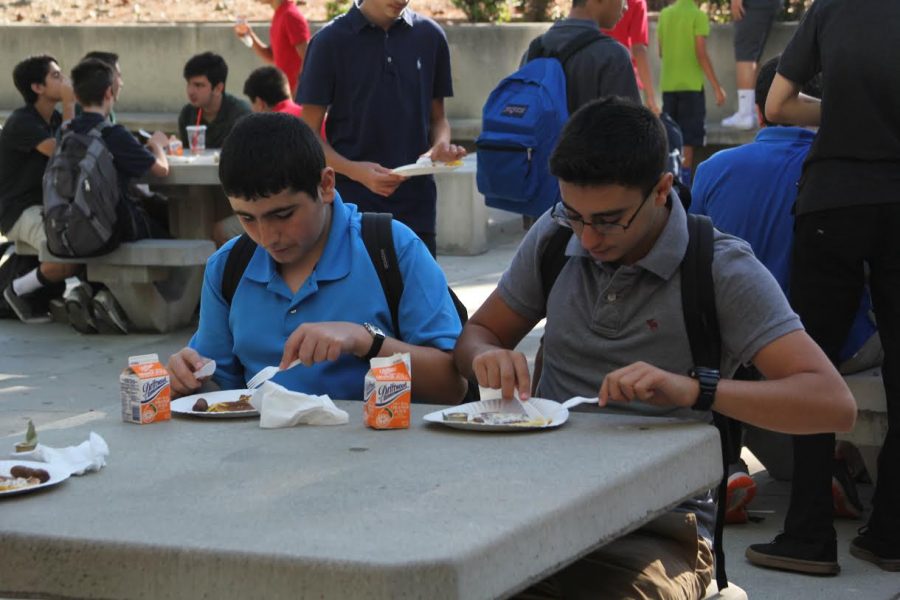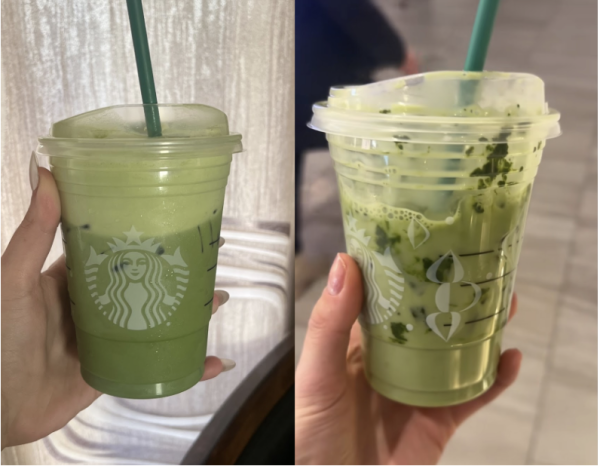Leave our lunches liberal
Students eating lunch on campus. Students are not allowed to leave campus for lunch.
If you have any friends attending neighboring schools in the GUSD school area or other school districts, chances are that you’ve heard of their accounts of their great daily lunches. Your friends report to you how they had a nice order of chilli cheese fries last Tuesday, followed by a cheeseburger and a shake the next day. Did La Cañada suddenly invest in their lunch repertoire? Has Crescenta Valley High been converted into a 5-star restaurant? No, it’s even better than that.
What these schools have in common is that they grant their students the freedom of leaving during lunchtime to go out and eat. Students are able to exit the campus and go to any place where they want to eat, so long as they return to class before their classes start. Now just imagine going to school with that kind of freedom, the ability to eat whatever you want for lunch, like any other grown human being. What could possibly go wrong? Well, according to District’s policies, quite a bit could go wrong.
There is a significant pool of people who completely oppose the idea of allowing students to leave during lunchtime. They bring up many points as to why students should stay at school during lunchtime, from safety concerns to the responsibility of students outside of campus, and while the liberal lunch may provoke the students to ditch class more often, this responsibility is ultimately left to the students. Many make the claim that students would be completely unsafe if they were to leave school to grab a lunch. That may seem like a valid point, but if we were to delve deeper into the point, it comes to my attention that the point is merely speculative.
Why would students be unsafe outside of campus? Perhaps it’s because they still have school time left and the school would not know their whereabouts. So, let’s establish a sign out sheet. It’s that simple. Let students sign out from the office with their name and contact information while also showing the office staff that they’re carrying a student ID with them as they leave. This way, students will always be accounted for with where they are during lunch and the worry of safety disappears.
Maybe you’re still thinking that the proposal is unsafe, that leaving students outside of school would expose them to dangers. Whatever ‘dangers’ students would be exposed to during lunchtime, however, would be just as evident after school. Why would a lack of supervision during school time be anymore dangerous than a lack of supervision after school time?
Ok, perhaps you’re arguing that leaving students unattended during lunch would cause a major problem with ditching and truancy. After all, the New York Times recently reported that up to 15 percent of students nationwide are chronically absent from classes. This same article, however, cites that these truancies often occur due to low academic performance and high dropout rates.
Merely from the identity of Clark, both of these problems are relatively eradicated. After all, even attending Clark requires students to have a minimum 2.0 G.P.A., so low grades are a much less significant problem here than at other schools. In fact, allowing students to leave would actually help students academically and allow them to grow in their everyday skills. Leaving the responsibility of attending class would fall squarely with the students, which would help them to become more trustworthy and accountable. In an article regarding the benefits of students having more options at school, Katrina Schwartz, a public radio reporter for KPCC and KQED, reports that giving students more freedom, such as allowing them to leave school grounds to eat their own lunches, can help students become more responsible and develop as independent learners.
Leaving students to make their own choices is practically a no-brainer. In such a well reputable and educated student body as that of Clark, any worries of truancy as a result of this policy change are very unlikely. Rather, allowing students to make their own choices can actually help them grow more mature and teach them to better handle responsibility. After all, if I can drive a 2-ton killing machine freely, I should at least be able to get my own food.

INTERESTS/HOBBIES: Countless hours of watching One Tree Hill makes up most of my free time. Along with singing different covers of songs. When I am not...








